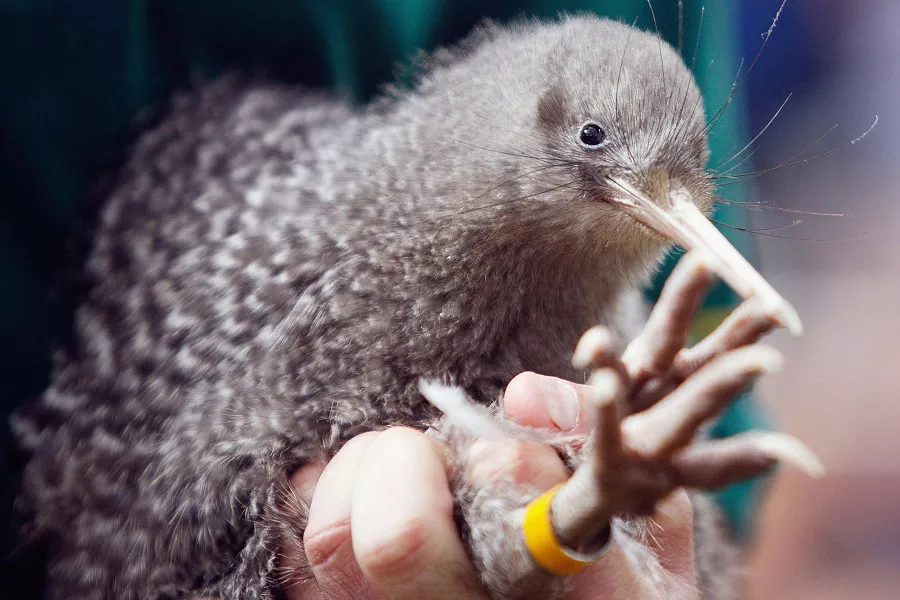The kiwi bird, an endemic species of New Zealand, has long captivated the imagination of researchers, conservationists, and bird enthusiasts worldwide. With its unique appearance and intriguing behaviors, the kiwi bird holds a special place in the hearts of many. One aspect that sets this iconic species apart from most birds is its inability to fly. In this article, we delve into the world of kiwi birds and explore the fascinating adaptations that have rendered them flightless.
Evolutionary Background
To understand why kiwi birds cannot fly, it is essential to examine their evolutionary history. The kiwi bird belongs to an ancient group of flightless birds known as ratites, which includes emus, ostriches, cassowaries, and rheas. These birds share common characteristics such as flat breastbones, underdeveloped wings, and dense leg bones, all of which are adaptations for a terrestrial lifestyle.
Physical Characteristics
Kiwi birds possess several physical traits that contribute to their flightlessness. Firstly, they have small, vestigial wings that are hidden beneath their feathers, rendering them virtually useless for sustained flight. Their wings lack the necessary musculature and skeletal structure required for powered flight, further cementing their terrestrial adaptation.
Additionally, kiwi birds have a large body size relative to their wingspan, making it highly challenging for them to generate enough lift to become airborne. This disproportionate size discrepancy is a significant hindrance to their ability to fly.
Unique Feathers and Musculature
An extraordinary feature of kiwi birds lies in their distinctive feathers. Unlike most birds, kiwis possess hair-like feathers that resemble coarse fur, offering them insulation and protection in their forest floor habitat. These specialized feathers are not conducive to generating the aerodynamic lift required for flying.
Furthermore, kiwi birds have robust leg muscles that are essential for their terrestrial lifestyle. Their leg muscles have evolved to provide exceptional strength and stability, allowing them to navigate through dense vegetation and burrow into the soil. However, these adaptations come at the cost of sacrificing the necessary muscle mass required for powerful flight.
Ecological Niche
The flightlessness of kiwi birds is intimately tied to their ecological niche. With no natural predators in New Zealand, these ground-dwelling birds have adapted to a life devoid of airborne escape mechanisms. Instead, they have developed other remarkable abilities to thrive in their environment.
Kiwi birds possess an exceptional sense of smell, which enables them to locate food sources such as insects and invertebrates hidden beneath the forest floor. They use their long, slender beak to probe the ground, extracting their prey with precision. This adaptation has allowed them to exploit a niche that is inaccessible to most flying birds.
Predation Risks
The absence of ground-based mammalian predators in New Zealand before human arrival rendered the need for flight unnecessary for survival. However, with the introduction of invasive species such as rats, stoats, and cats, kiwi birds faced new predation risks. Unfortunately, their flightlessness has made them vulnerable to these terrestrial predators, leading to a decline in population numbers.
Conservation Efforts
Recognizing the importance of conserving this unique species, dedicated conservation programs have been established in New Zealand. These initiatives aim to protect kiwi birds by implementing predator control measures, habitat restoration, and captive breeding programs.
Furthermore, translocation efforts have been undertaken to establish kiwi populations on predator-free islands, providing them with a safer habitat to thrive and reproduce. These conservation endeavors have shown promising results, contributing to the overall recovery of kiwi bird populations.
Conclusion
While kiwi birds may not possess the ability to fly like most birds, they are a testament to the diversity of adaptations that have evolved in our natural world. Their flightlessness has allowed them to carve out an ecological niche uniquely suited to their forest floor habitat, relying on specialized senses and physical traits to thrive. The ongoing conservation efforts aimed at protecting kiwi birds highlight the significance of preserving these remarkable creatures for future generations to appreciate and study.
In unraveling the mysteries of why kiwi birds cannot fly, we gain a deeper understanding of the intricate web of nature’s adaptations. The kiwi bird serves as a reminder that flight is not the sole prerequisite for survival and success in the avian realm, showcasing the wonders of evolutionary biology at its finest.


 Facebook
Facebook  Instagram
Instagram  Youtube
Youtube 